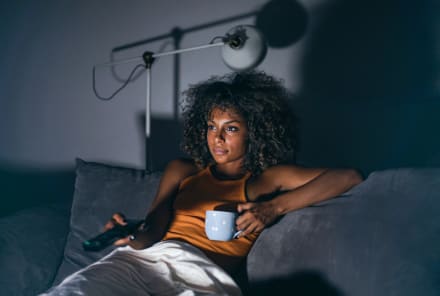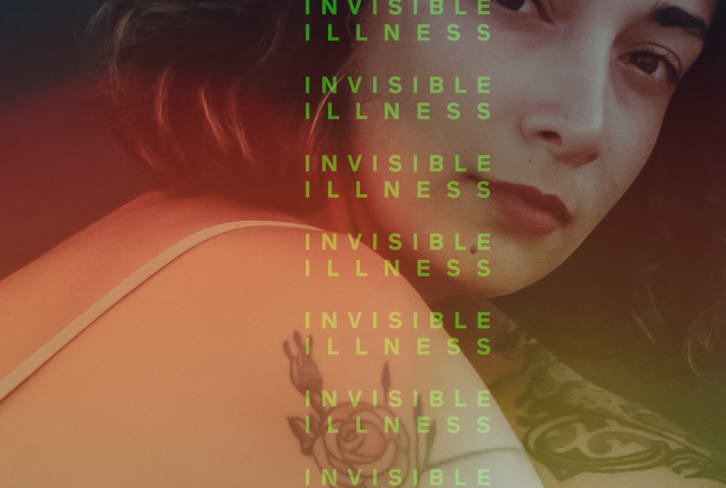Advertisement
The Nighttime Routine That Never Fails To Puts This Ayurvedic Expert To Sleep


When I began studying Ayurveda almost 30 years ago, I started using ghee (clarified butter) internally and topically, and it has since become one of my go-to tools.
Ghee is delicious in the kitchen and tastes great on toast or vegetables, but in Ayurveda, it's also considered a powerful medicine—used for everything from digestive healing to joint pain to headaches.
I've found that it also happens to be surprisingly effective for preparing the body for bedtime.
Ghee, vata imbalances, and sleep.
We are all a unique combination of these three doshas. And when one of our elements goes out of balance, we feel it in our bodies. Let's say you suddenly find yourself easily irritated or getting a skin rash. In that case, your fire element, or pitta, is likely aggravated. Instead of indulging in chilis and tequila and hot yoga, you'll want to do the kinds of things and eat the kinds of foods that cool you down. It's really common sense: When you're too hot, take off the sweater!
In Ayurveda, sleeping problems are thought to be created by a vata imbalance. In the case of insomnia, our vata, our motion, has become aggravated with too much stress and overwhelm. In order to balance ourselves out, we need to do things that are calming, grounding, and nourishing.
Ghee is one of the most powerful "tools" for balancing vata, and its soothing qualities lend themselves to deep and rewarding sleep. Here are a few of my favorite ways to work with the ingredient come bedtime.
How to use ghee to enhance your sleep:
Prepare a cardamom ghee sleep tonic.
When I need a little extra calming at night, I love to drink a mixture of almond milk, spices, and ghee. It's so easy to make, and I can feel it relaxing me almost immediately.
Ingredients
- 1 cup almond milk (or milk of your choosing)
- 2 tsp. ghee
- 1 pinch cardamom
- 1 pinch nutmeg
- 1 tsp. honey to taste
Method
- Warm 1 cup of almond milk on the stove and pour into a blender.
- Add the ghee, cardamom, nutmeg, and honey to the almond milk and blend on high until frothy.
- Sip the tonic about 30 minutes before you're going to get ready for bed to feel grounded, calm, and ready to sleep.
Give yourself a ghee foot massage (Padabhyangam).
I've also found that massaging the soles of your feet with a little ghee before bed helps bring about the most wonderful and truly restful sleep. Here's how this warming ritual is done:
- Use about 1 tbsp. of ghee to massage the soles of your feet just before getting into bed. Use slow, gentle strokes. If your toes feel cold to the touch, spend a little extra time on each toe to increase circulation.
- Put on a thick pair of warm socks to keep your feet warm and protect your sheets from getting oily.
- If you're still feeling a bit chilled, prepare a hot water bottle and place it beneath your feet in bed.
When stacked onto a healthy sleep routine, these techniques can work wonders. If you struggle with sleep, it's still important to keep up with the tried-and-true tips: Limit exposure to blue light from phones and computers at night to help maintain the integrity of your circadian rhythm; give yourself sufficient time to wind down with some yin yoga, music, or meditation (I love Transcendental Meditation); take a warm bath, etc. In my nighttime routine, I typically use one of Surya's Calming Bath Soaks to soak for 20 minutes, then get right into my pajamas, apply my nighttime skin care, and slip into bed.
Finally, though it's sometimes hard to do, try to go to bed early when you can. In Ayurveda, the hours between 10 p.m. and 2 a.m. are when the body does most of its healing. Unfortunately, we can also get a "second wind" around 10 p.m. because this is when we enter a time when pitta (our fire dosha) dominates.
If you can shift your routine so that you're in bed by 10 p.m., you'll probably get more restful and restorative sleep.
The bottom line.
From an Ayurvedic perspective, we're all part of nature's cycles—and we have the power to get back in flow with nature using gentle and simple practices. These easy practices that incorporate ghee help calm the vata dosha and set the conditions for deep sleep and the restoration that comes with it.
Watch Next
Enjoy some of our favorite clips from classes
Enjoy some of our favorite clips from classes
What Is Meditation?
Mindfulness/Spirituality | Light Watkins
Box Breathing
Mindfulness/Spirituality | Gwen Dittmar
What Breathwork Can Address
Mindfulness/Spirituality | Gwen Dittmar
The 8 Limbs of Yoga - What is Asana?
Yoga | Caley Alyssa
Two Standing Postures to Open Up Tight Hips
Yoga | Caley Alyssa
How Plants Can Optimize Athletic Performance
Nutrition | Rich Roll
What to Eat Before a Workout
Nutrition | Rich Roll
How Ayurveda Helps Us Navigate Modern Life
Nutrition | Sahara Rose
Messages About Love & Relationships
Love & Relationships | Esther Perel
Love Languages
Love & Relationships | Esther Perel

















